|
|
|
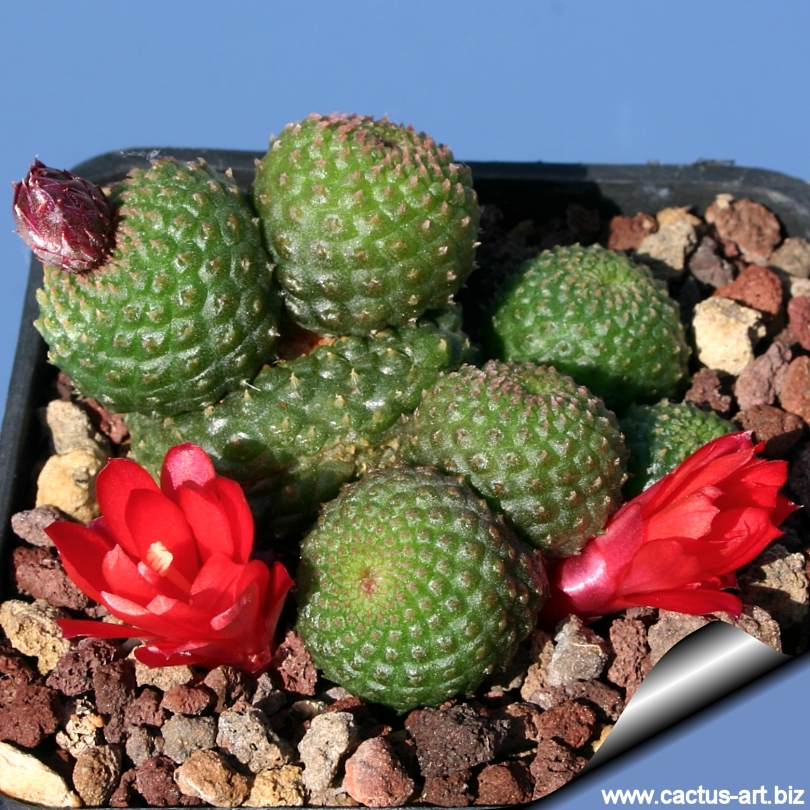
With sun exposures plants take a very dark-purple tinge, and may
also produce a scattered group of bristly spines.
|
|
Description: Clumping globular cactus, up to 5 cm in diameter, and
up to 7 cm tall. It can slowly form clumps. The specially notable
characteristics of this cactus is its green naked stem that will turn a
lovely purple tinge in full sun.
But the most peculiar
trait of this plant
are the
vestigial leaves
subtending the small areoles on each tubercle. This is an
ancestral trait not manifested in the normal plant. This trait is
revealed thanks to a mutation that permits this odd cultivar to show the
characteristic of bearing leaves, reminding us of an ancient era when
its cacti ancestors were normal leafed plants.
Stem: Up to 5 cm, globose, dark green, that begins to offset in
about its third or fourth year, eventually making a moderately tight
clump, with the individual stems standing out a little on their own.
Tubercles: In two downward spirals in ratio 8:13.
Leaves: A small green scale-like leaf subtends
each areole at the
tubercles tip.
Spines: Usually absent or very few small, snow-white, very thin, very short and soft,
irregularly scattered on the plant stems..
Flowers: Bright red, up to 3.5 cm wide, developing from the base
or at the tip of each head, resulting in a superb display.
Blooming season: It is usually one of the earliest rebutia's to
bloom in spring.
|
|
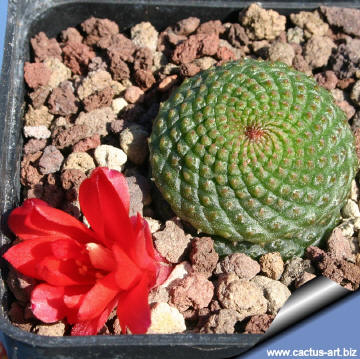 |
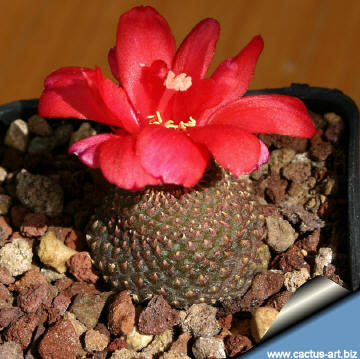 |
|
The flowers are bright red, up to 3.5 cm wide,
developing from the base or at the tip of each head, resulting in a
superb display. |
|
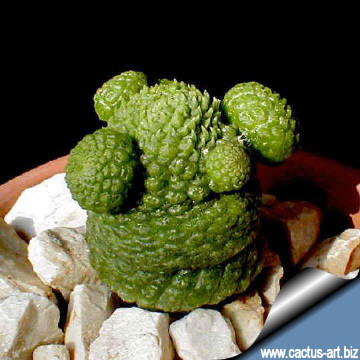 |
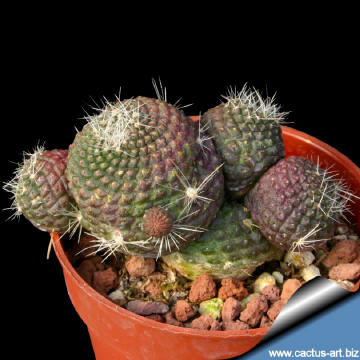 |
|
This is a monstrous form, and almost spineless.
Under filtered light it remains green and fails to produce
spines. |
|
Advertising
|
|
|
|
|
Family:
Cactaceae
(Cactus Family)
Scientific name:
Rebutia krainziana "inermis"
Origin:
Garden origin (Nursery
produced cultivar)
Conservation status: Listed in
CITES appendix 2.
Synonyms: Rebutia
krainziana f. mostruosa
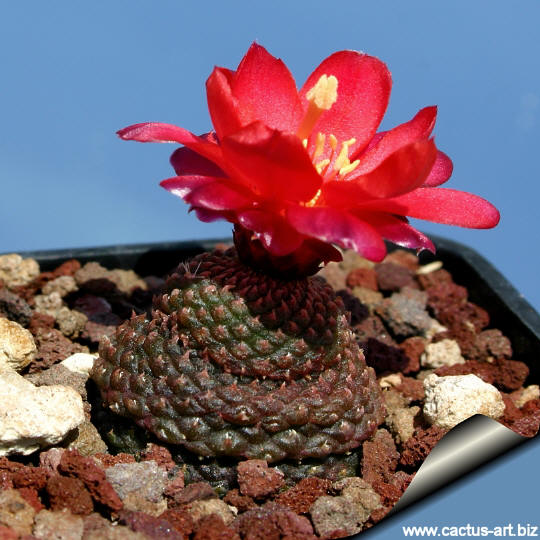
The flowers are bright red like in the standard form.
|
|
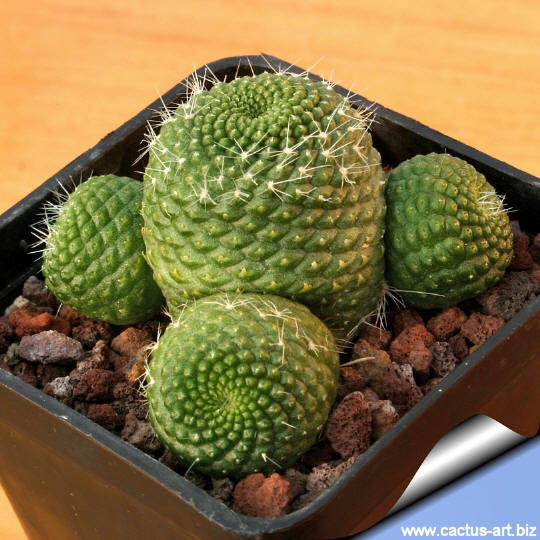
This is a monstrous form, and almost spineless.
Under filtered light it remains green and fails to produce
spines.
|
|
|
|
Cultivation: Full sun to light shade. Water regularly in summer
but do not over-water. Keep dry in winter.
Hardy to -4°C.
It is better that they be repotted regularly.
Repotting is best done at the end of
winter, but can be done at other times,
too. Repotting every
two or three years will suffice. Do not water for a couple of
weeks after repotting, to reduce risk of root rot via broken roots.
The size of stems will increase the number of flowers
produced.
Propagation: By grafting or offsets.
Photo of conspecific taxa,
varieties, forms and cultivars of Rebutia krainziana.

 |
|